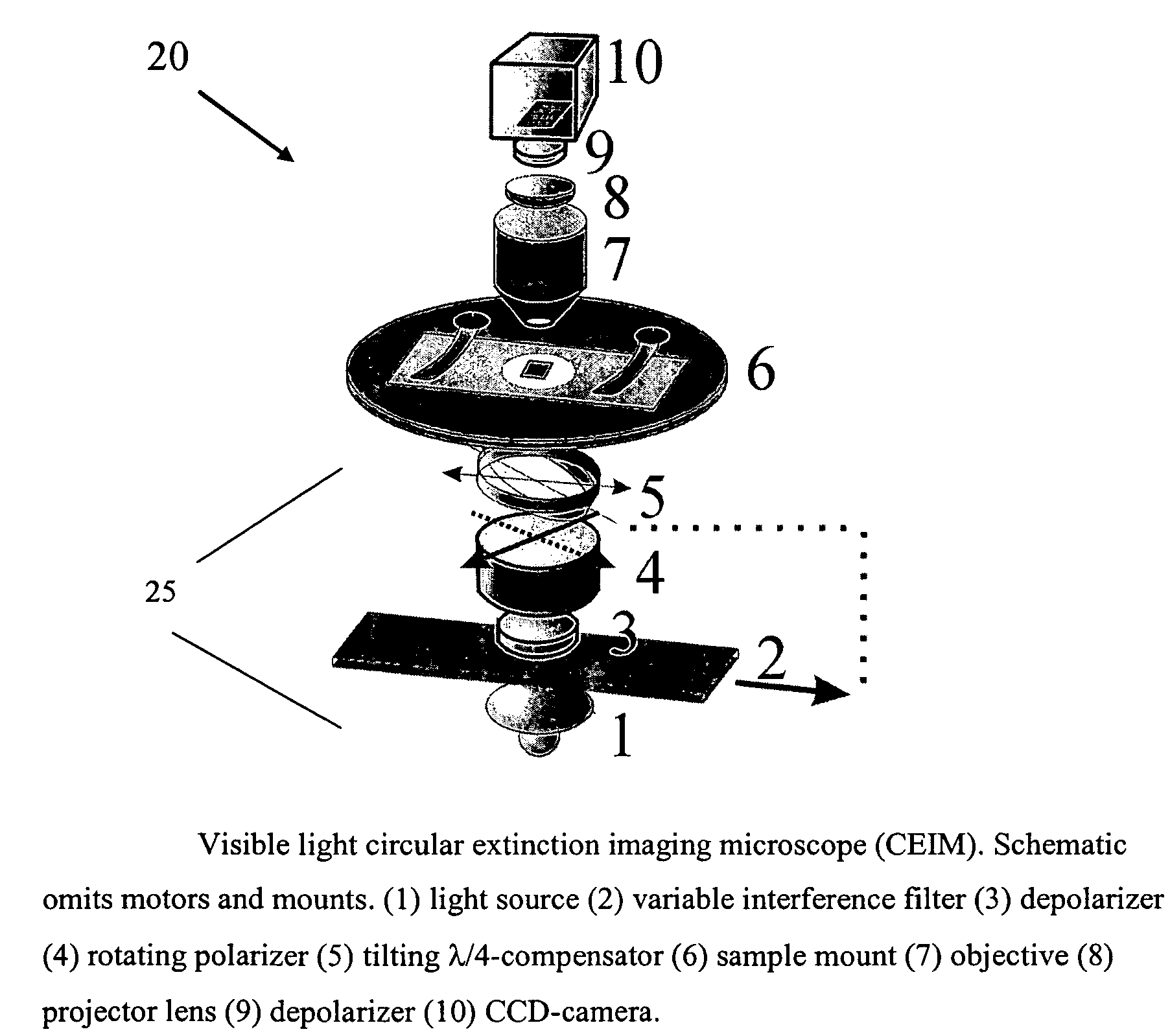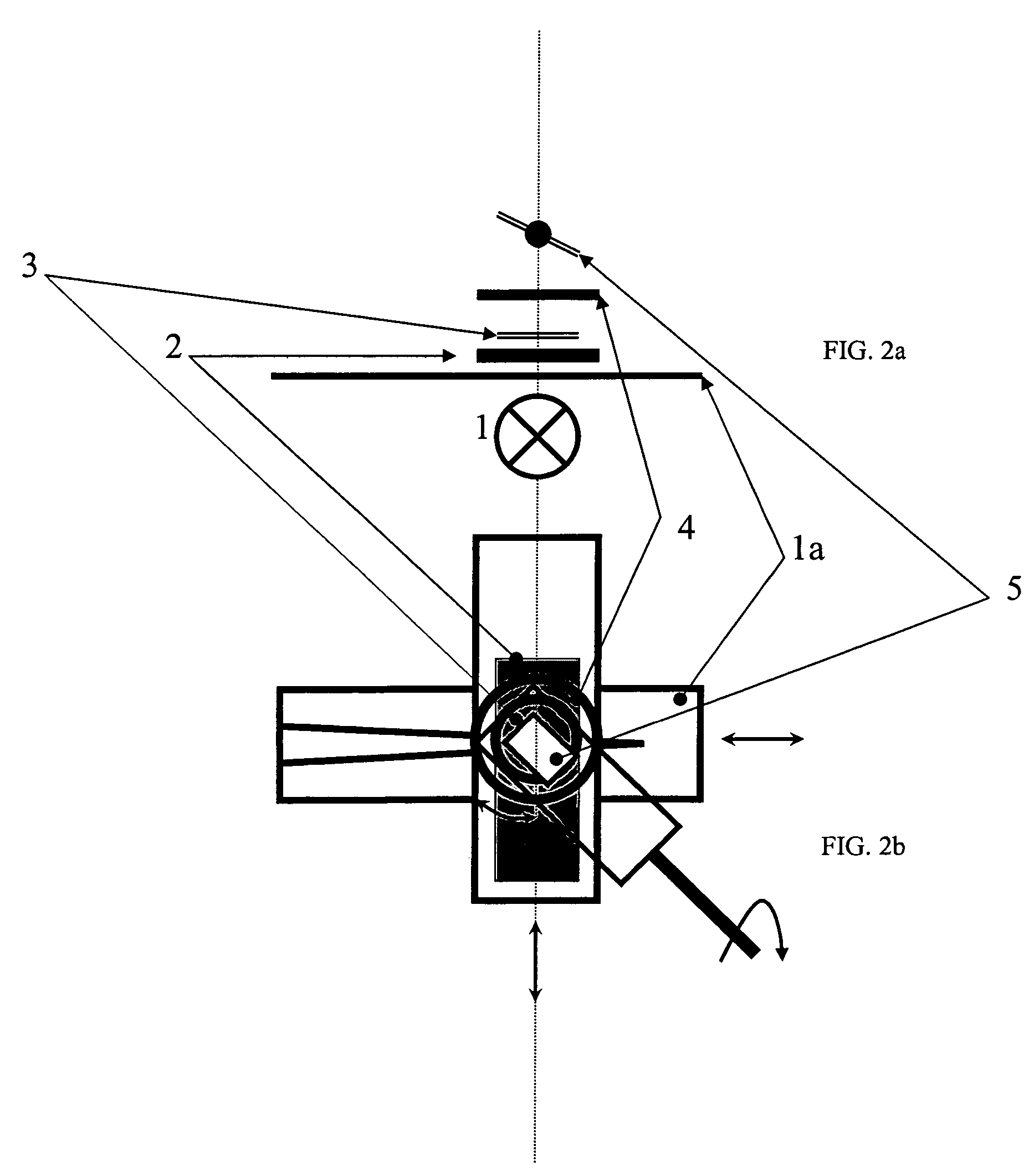Circular extinction contrast imaging microscope
a contrast imaging and microscope technology, applied in the field of optical microscopy systems and methods, can solve the problems of woefully under-utilized cd and or spectroscopy, the difficulty of measuring cd of organized media with commercial instruments is so extreme, and achieves the effect of improving the signal-to-noise ratio
- Summary
- Abstract
- Description
- Claims
- Application Information
AI Technical Summary
Benefits of technology
Problems solved by technology
Method used
Image
Examples
Embodiment Construction
[0033]The present invention, in certain aspects, provides circular extinction contrast imaging techniques and microscopes based on the mechanical modulation of near perfect circularly polarized light (CPL) in conjunction with CCD detection. Signal to noise lost in slow modulation (e.g., less than about 30 Hz) can be regained by signal averaging techniques using CCD camera images. The systems and techniques of the present invention are particularly useful for studying chiro-optical effects—spontaneous perturbations of the state of electromagnetic radiation exerted by chiral molecules. Molecular chirality, as evidenced by changes in the polarization state of light passing through a given sample, is a shared characteristic of all biopolymers. Tissue sections or fixed cell samples, for example, routinely used in cell biological research and pathological procedures, are replete with optically active biopolymers.
[0034]A circular extinction imaging microscope (CEIM) according to one embodi...
PUM
 Login to View More
Login to View More Abstract
Description
Claims
Application Information
 Login to View More
Login to View More - R&D
- Intellectual Property
- Life Sciences
- Materials
- Tech Scout
- Unparalleled Data Quality
- Higher Quality Content
- 60% Fewer Hallucinations
Browse by: Latest US Patents, China's latest patents, Technical Efficacy Thesaurus, Application Domain, Technology Topic, Popular Technical Reports.
© 2025 PatSnap. All rights reserved.Legal|Privacy policy|Modern Slavery Act Transparency Statement|Sitemap|About US| Contact US: help@patsnap.com



